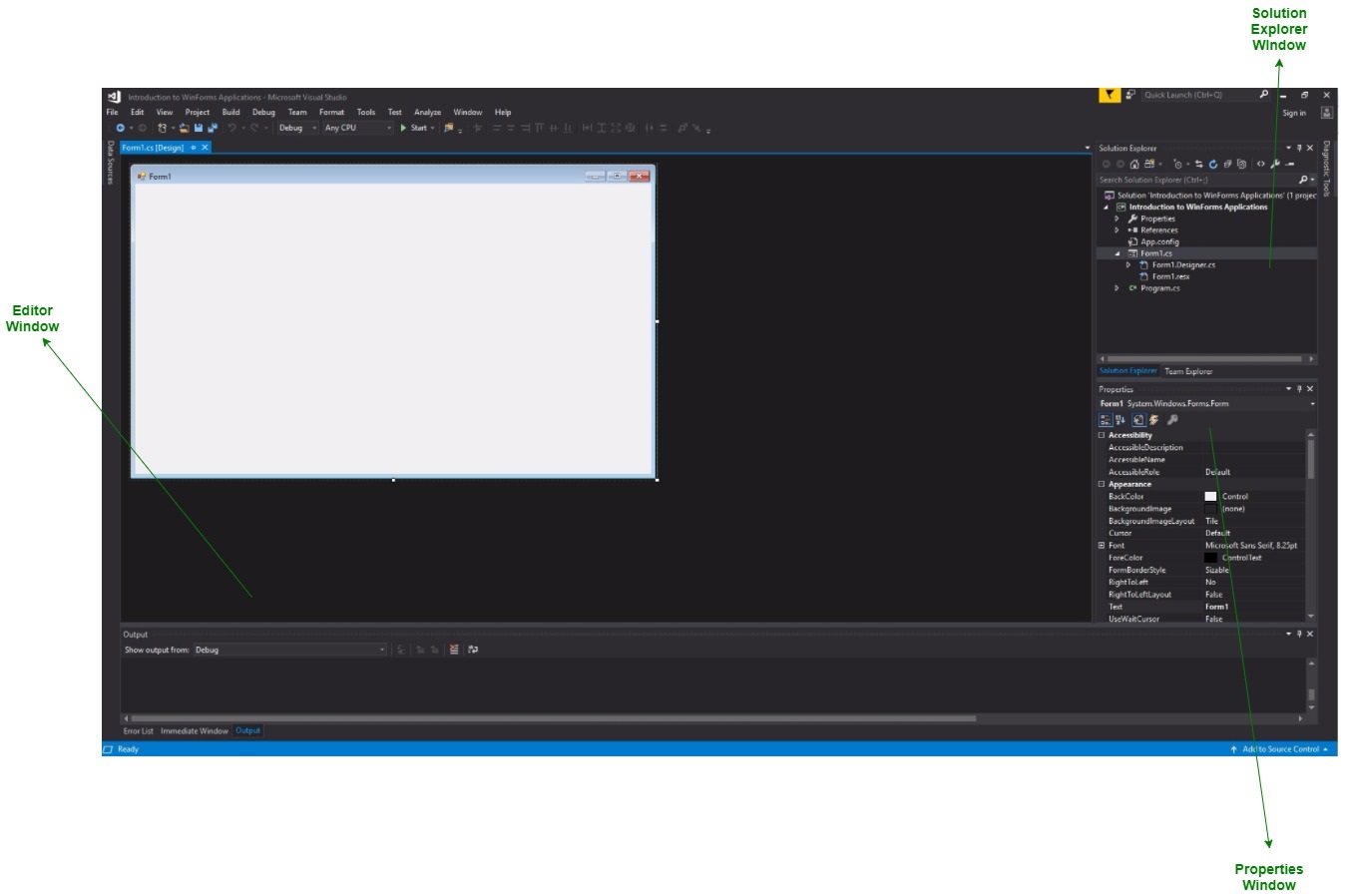
- #VISUAL STUDIO 2017 WINDOWS FORMS APPLICATION MANUAL#
- #VISUAL STUDIO 2017 WINDOWS FORMS APPLICATION WINDOWS#
WindowsDefaultBounds − The form is positioned at the default location and size determined by Windows.
#VISUAL STUDIO 2017 WINDOWS FORMS APPLICATION MANUAL#
Manual − The location and size of the form will determine its starting position. It will have any of the following values −ĬenterParent − The form is centered in the area of its parent form.ĬenterScreen − The form is centered on the monitor. This property determines the initial position of the form when it's first displayed. This specifies the maximum height and width of the window you maximize. This specifies the minimum height and width of the window you can minimize. This is the height of the Form in pixels.īy default, this property is True and you can set it to False to hide the Minimize button on the title bar.īy default, this property is True and you can set it to False to hide the Maximize button on the title bar. This property specify font type, style, sizeĭetermines whether a Help button should be displayed in the caption box of the form. If True, allows the form to respond to mouse and keyboard events if False, disables form. In addition, its caption font is smaller than the usual.īy default, this property is True and you can set it to False to hide the icon and disable the Control menu. SizableToolWindow − Same as the FixedToolWindow but resizable. It looks like the toolbar displayed by the drawing and imaging applications.
#VISUAL STUDIO 2017 WINDOWS FORMS APPLICATION WINDOWS#
In this case, windows can't be resized.įixedDialog − A fixed window, used to create dialog boxes.įixedSingle − A fixed window with a single line border.įixedToolWindow − A fixed window with a Close button only. Sizable − This is default value and will be used for resizable window that's used for displaying regular forms.įixed3D − Window with a visible border, "raised" relative to the main area. None − Borderless window that can't be resized. The BorderStyle property determines the style of the form's border and the appearance of the form − The AutoScrollPosition is the number of pixels by which the two scroll bars were displaced from their initial locations. This property lets you specify the minimum size of the form, before the scroll bars are attached. This Boolean property indicates whether scroll bars will be automatically attached to the form if it is resized to a point that not all its controls are visible. This is a property of the form, but it affects the controls on the form. The default value of this property is True. This Boolean property determines whether the controls you place on the form are automatically scaled to the height of the current font. Usually, the Cancel button on a form is set as CancelButton for a form. The button that's automatically activated when you hit the Esc key. Usually the OK button on a form is set as AcceptButton for a form. The button that's automatically activated when you press Enter, no matter which control has the focus at the time. You can refer to Microsoft documentation for a complete list of properties associated with a Form control − S.N These properties can be set or read during application execution. Form Propertiesįollowing table lists down various important properties related to a form. If you click the icon on the top left corner, it opens the control menu, which contains the various commands to control the form like to move control from one place to another place, to maximize or minimize the form or to close the form. Visual Studio creates a default form for you when you create a Windows Forms Application.Įvery form will have title bar on which the form's caption is displayed and there will be buttons to close, maximize and minimize the form shown below − Every window you see in a running visual basic application is a form, thus the terms form and window describe the same entity. Visual Basic Form is the container for all the controls that make up the user interface.


Let's start with creating a Window Forms Application by following the following steps in Microsoft Visual Studio - File → New Project → Windows Forms Applicationsįinally, select OK, Microsoft Visual Studio creates your project and displays following window Form with a name Form1.


 0 kommentar(er)
0 kommentar(er)
